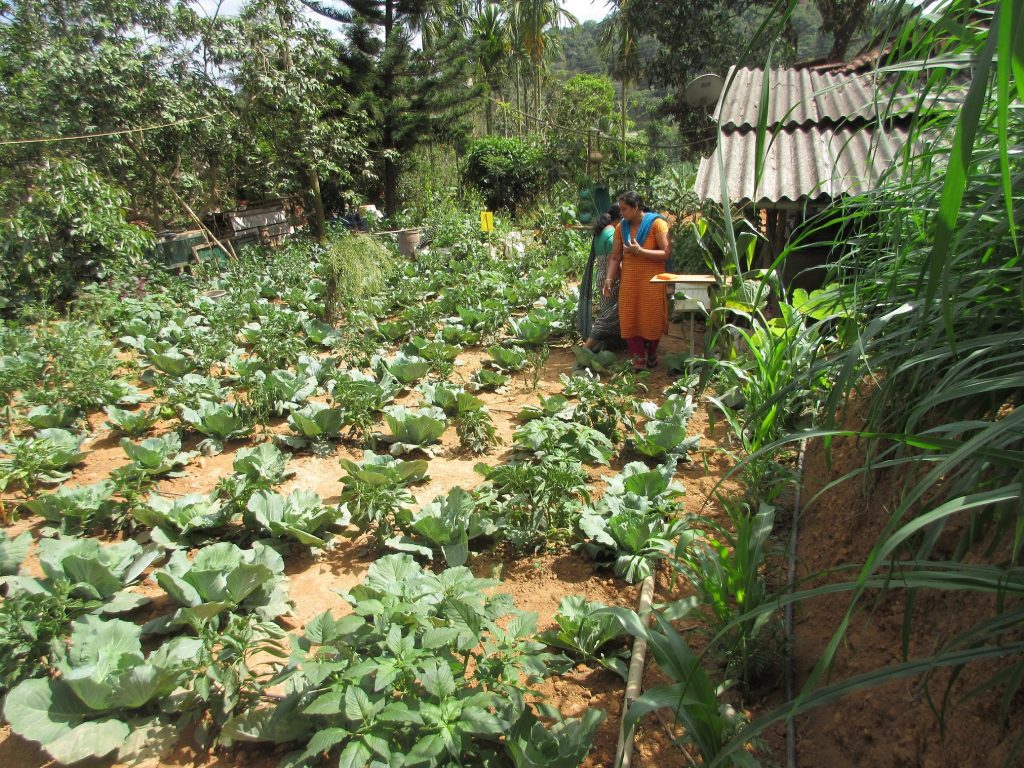Integrated Agricultural Systems are a sustainable practice that  has economic, environmental, and social benefits. This farming technique is a “whole system” approach that utilizes existing biological relationships (Agriculture Sustainability Institute). It builds upon the concept of agroecology, which is the application of ecological principles to agricultural systems and practices.” (Oxford Dictionary) The goal of integrated agricultural systems is to minimize the amount of impact the agricultural process has on the environment while maximizing production yield. It achieves this by reducing the number of chemical inputs and natural resource degradation while creating a self-sustaining farming system. Integrated agricultural systems help “to create sustainable farming and food systems.”(USDA) A common misconception would be that sustainable farming and integrated farming are one and the same. However, sustainable farming does not solely rely on the use of “biological cultivation and pest controls.”
has economic, environmental, and social benefits. This farming technique is a “whole system” approach that utilizes existing biological relationships (Agriculture Sustainability Institute). It builds upon the concept of agroecology, which is the application of ecological principles to agricultural systems and practices.” (Oxford Dictionary) The goal of integrated agricultural systems is to minimize the amount of impact the agricultural process has on the environment while maximizing production yield. It achieves this by reducing the number of chemical inputs and natural resource degradation while creating a self-sustaining farming system. Integrated agricultural systems help “to create sustainable farming and food systems.”(USDA) A common misconception would be that sustainable farming and integrated farming are one and the same. However, sustainable farming does not solely rely on the use of “biological cultivation and pest controls.”
This type of farming technique where two types of agricultural productions are occurring in the same area is a common practice in the developing world. Small scale subsistence farmers rely on integrated farming systems for their livelihoods. There are a lot of examples of these systems, the most familiar being the Native American three sisters system.
The three sisters’ farming system consists of growing maize, beans, and squash together. The thought process being that all three crops benefit each other and the soil they grow in. The maize provides a stalk for the beans to climb on, the beans replenish the soil with nitrogen, and the squash acts as a ground cover preventing the growth of weeds. Another example would be the combination of coconut trees and livestock in a plantation setting. The concept is that the livestock grazing on the vegetation below the coconut trees act as a weed control while helping farmers locate coconuts on the ground (Reynolds). This integrative system is economically attractive as it provides the farmer with two enterprises to earn revenue from. Alternatively, this system helps subsistence farmers increase their food security.
Making use of the resources available is something most farmers rely on. The concept is simple. Nothing goes to waste. The outputs of one enterprise can be used as an input for another enterprise. A common example would be utilizing cow manure and crop scraps in a compost system. Integrated farming has a lot of scalable potential. From the sustainable practice of composting to community-led local systems (ISAP).
The Indian Society of Agribusiness Professionals believe Integrated Farming Systems are a great approach to “stabilize income streams through natural resource management and livelihood diversification.” (ISAP) Integrated Farming systems are sustainable systems that improve food and farmer security while reducing poverty.
This is especially important in countries like India where 70% of its population rely on agriculture for their livelihoods. A subsistence farmer from a developing country has limited resources available therefore they need to optimize their use of what they have. This is where integrated farming systems and techniques come into play.
Integrated Agricultural System research took off after the Second World War when concern about agrochemical’s impact on the environment and our health emerged (Alimentarium). Many credit the groundbreaking novel “Silent Spring” by Rachel Carson for sparking the modern-day environmental movement and the push for more earth-friendly farming practices. Today, scientists around the world are helping to implement these kinds of systems that help subsistence farmers flourish while remaining sustainable.
In 2017, the International Atomic Energy Agency teamed up with farmers in India in hopes to discover “ways to produce more food, improve the quality of their farmland, and earn more money”(Fisher) Scientists at the Tamil Nadu University utilized nuclear and isotopic techniques to determine which crops would thrive on local farming systems. They also developed an integrated agricultural system that combined crop and livestock production (cattle and goats). This system is organic and self- sustainable. The project helped improve the overall health of the soil and increased yields in both livestock and crop production. A lot of conventional farming methods rely on chemical inputs and producing only one type of crop. Monocropping and the application of pesticides puts a strain on a farmer’s land and water resources. After a time, crop yield decrease which leads to less food and lower earnings (Fisher).
As the changing climate becomes more of a concern, our future success relies on us as a society to become more sustainable as a whole. Agricultural production is necessary but it is up to us to create more innovative ways we can increase our yields while maintaining the health of our planet. Integrated agricultural systems are just one of many techniques that are helping create a more sustainable future!
Resources
“Agricultural Sustainability Institute.” Biologically Integrated Farming Systems, University Of California, Davis, asi.ucdavis.edu/programs/ucsarep/about/what-is-sustainable-agriculture/practices/biologically-integrated-farming-systems.
Alimentarium, Ressources. “Integrated Farming and Sustainable Farming.” Alimentarium, Alimentarium, 29 May 2017, www.alimentarium.org/en/knowledge/integrated-farming-and-sustainable-farming.
Fisher, Matt, and Mohammad Zaman. “Integrated Farming Finds Success in India with Help of Nuclear Science.” IAEA, IAEA, 18 Oct. 2017, www.iaea.org/newscenter/news/integrated-farming-finds-success-in-india-with-help-of-nuclear-science.
“Integrated Agricultural Systems.” NAL, www.nal.usda.gov/afsic/edtr/categories/integrated-agricultural-systems.
“Integrated Farming Systems.” Integrated Farming Systems, 2019, www.isapindia.org/pages.php?url_key=integrated-farming-systems.
Reynolds, S.G. “Integration of Animal Production in Coconut Plantations.” Integration of Animal Production in Coconut Plantations, Indian Institute of Sciences, Centre for Ecological Science, 1995, wgbis.ces.iisc.ernet.in/envis/cocdoc107.html.

Leave a Reply
You must be logged in to post a comment.